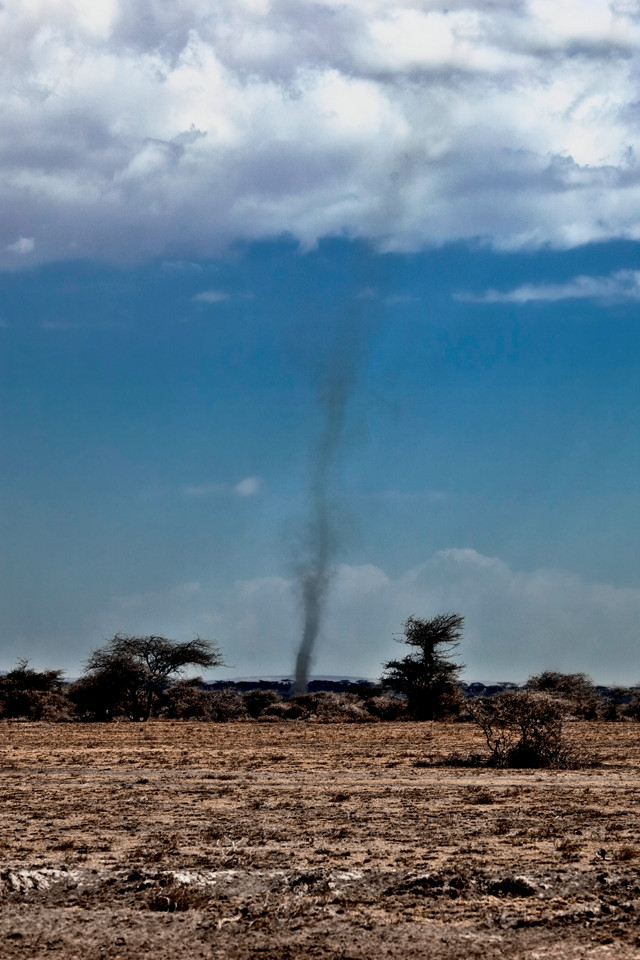
by Julia Rosen Monday, July 13, 2015

Dust devils look fierce, but don't lift much dust into the atmosphere, according to new research. Credit: ©Noel Feans, CC BY-2.0.
Dust is an inescapable byproduct of a rocky planet reworked by tectonic forces, extraterrestrial impacts and human activities. And though it may seem like a nuisance, airborne dust plays an integral role in the Earth system, fertilizing downwind ecosystems and influencing climate. But just how dust gets lofted into the air has long puzzled scientists. Previous studies have suggested that dust devils could stir up as much as a third of the atmosphere’s dust budget, but new work reveals these twisters contribute just a tenth of that amount.
Researchers led by Bradley Jemmett-Smith of the University of Leeds in England used climate data from the European Centre for Medium-Range Weather Forecasts to calculate where and when conditions were ripe for dust devils. In most arid regions, the scientists calculated that dust devils could form only about 200 hours each year, and up to 2,000 hours per year in a few places like the Arabian Peninsula and the Chilean desert.
When combined with maps of dust availability, the researchers found that dust devils globally contribute about 75 million tons of dust to the atmosphere per year, or 3 percent of the total dust budget, the researchers reported in Geophysical Research Letters. However, they noted that dust devils may contribute significantly to local dust transport in the Atacama and Sechura Deserts of South America and in areas around the Red Sea.
© 2008-2021. All rights reserved. Any copying, redistribution or retransmission of any of the contents of this service without the expressed written permission of the American Geosciences Institute is expressly prohibited. Click here for all copyright requests.